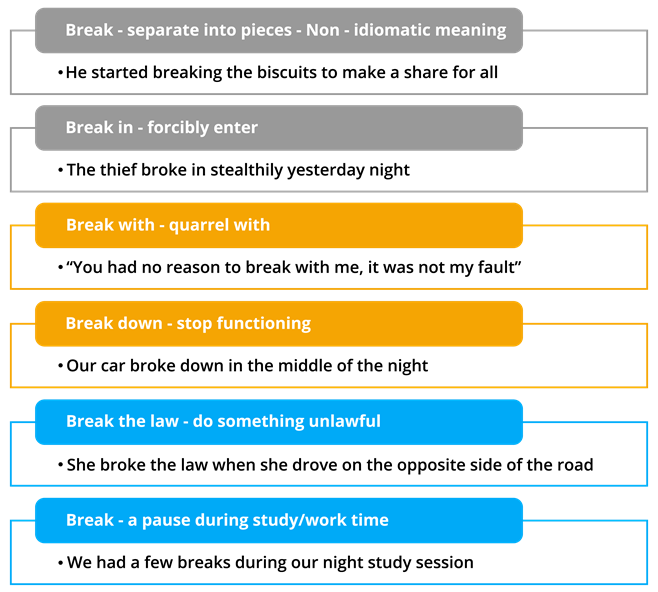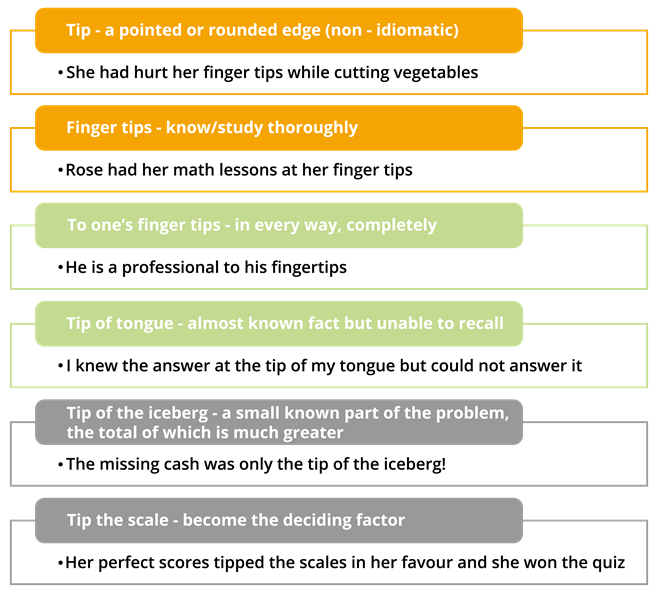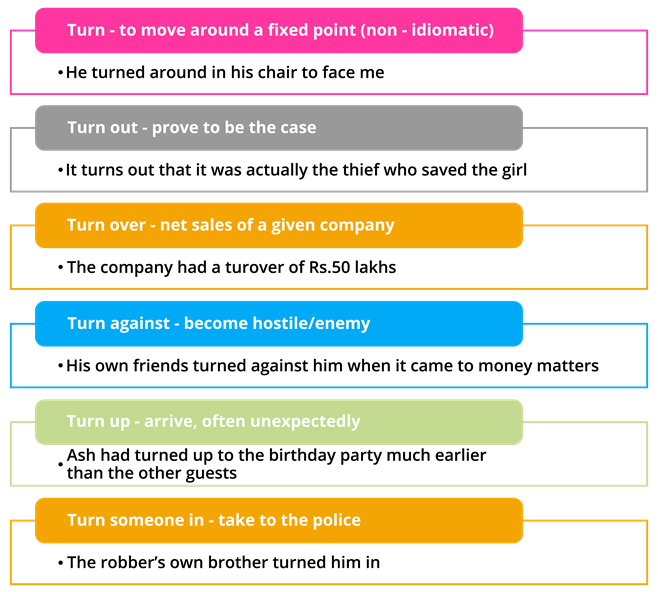
PUMPA - SMART LEARNING
எங்கள் ஆசிரியர்களுடன் 1-ஆன்-1 ஆலோசனை நேரத்தைப் பெறுங்கள். டாப்பர் ஆவதற்கு நாங்கள் பயிற்சி அளிப்போம்
Book Free DemoWe have already seen that idioms have both literal and subtle meanings. It is important to understand the idiomatic and the non-idiomatic meanings of the expressions. The same expression or phrase can be used in more than two contexts.
The word "break" has many meanings. The literal meaning is called non-idiomatic meaning and the other formed phrases (noun + preposition / verb + preposition) have idiomatic meanings. Let us look into the picture for a clear understanding.

Similarly, we can try for different words:
Tip: The literal meaning or the non-idiomatic meaning - the pointed or rounded edge. Let us look into the picture for a clear understanding.

Similarly, many of our everyday words have both idiomatic and non-idiomatic meanings. It is a good exercise to try and list down all possible combinations that can be formed from a single noun/verb to form different meanings. Let us take another example:
Turn: The literal meaning or the non-idiomatic meaning - to move in a circle along with a fixed point
